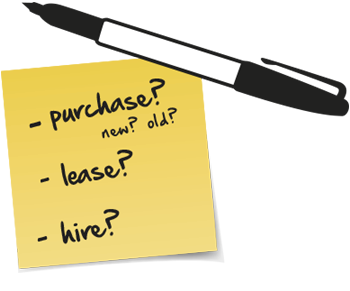
We teamed up with Farm Journal to ask experienced farmers to share their best advice with young and beginning producers. The result is Practical Wisdom – the sharing of knowledge from one generation to the next.
Evaluate equipment purchases
When asked about the biggest obstacle he faced as a new farmer, one Michigan producer said it was farm equipment, specifically the fact he didn’t have any.
Steve, a Michigan producer, turned his challenge into an opportunity, one that allowed him to save money by developing relationships with farmers in his area who do custom work. “It doesn’t make sense to buy a combine when you have to pay for insurance, repairs, loans and other expenses,” he said.
Farmers who participated in Practical Wisdom, a joint effort by Farm Journal and Farm Credit Services of America (FCSAmerica) to transfer knowledge from veteran producers to up-and-coming generations, cautioned against investing too much in equipment.
Want vs. need
“Some technology is great,” said Steve Sigdestad, who farms in South Dakota. But “some is more of a ‘want’ than a ‘need’ for smaller beginning operators. . . . My wife and I find it beneficial to purchase older equipment to save some capital and then rebuild or fix it to a field-ready state. This gives you a fundamental understanding as to how the equipment should operate and function in the field.”
Every operation has unique equipment needs, and every machine carries benefits and costs. For example, a used machine might have lower upfront costs, but labor costs to keep it in good running condition could prove expensive. Buying versus leasing also has to be carefully weighed.
Acquire assets that improve productivity
Fully consider the operational needs of your farm or ranch, then evaluate what additional equipment, if any, you need, advised Carl Horne, vice president of customer solutions at FCSAmerica.
”Focus on acquiring capital assets that improve the productivity and/or profitability of the operation. Then, chart your plan to either purchase, lease or hire the equipment based on the financial capabilities of your operation.”
– Carl Horne
Planning equipment purchases
Horne said it is important that operators commit their equipment plan to paper. A written plan makes it easier to align capital purchases with overall financial and working capital needs, Horne said. It also provides discipline. “The effect of this is that you’re making your capital purchase plan deliberate, and you can eliminate emotional decision-making,” he said.
Consulting with a close network of advisors – including tax experts, lenders, accountants and attorneys – can aid in developing a solid plan for purchasing, leasing or hiring equipment, Horne said. Reach out to your lender to consult about the various impacts to your balance sheet and your cash flow when considering each option.
“Consider using your University Extension’s research on county and state lease and custom hire data to help you forecast expenses. Then, work with your lender to customize a plan that fits in with the overall goals you have set for your operation,” Horne said. “I caution producers in following the same plan as their neighbors and friends, and instead encourage them to carefully make a plan that works for them.”
Buying Equipment
If you’ve decided to buy equipment, new or used, it is important to research different makes and models. Learn a piece of equipment’s pros and cons by consulting farmers who use it. Determine if dealers in your area stock, or can order, replacement parts for the equipment you are considering. A breakdown that forces a delay of several days or a week is costly in both dollars and lost productivity.
Non-Ownership Options
Some farmers have found it works well to jointly purchase equipment, or arrange for a neighbor to plant, till or harvest on a custom basis, paying a per-acre fee.
“Custom harvesting can be much more efficient than owning a combine when getting started,” said Eric Boertje, a Minnesota farmer. “Custom spraying can also be very important for timing and can save on equipment investments.”
Another option is to lease a tractor, combine or other equipment for the season, or for a shorter amount of time. Sam Johnson, an Ohio farmer, advises new farmers to lease or rent equipment whenever possible. “Too often producers become enamored with owning assets,” he said. “Don't do it unless you have piles of cash to invest.”

